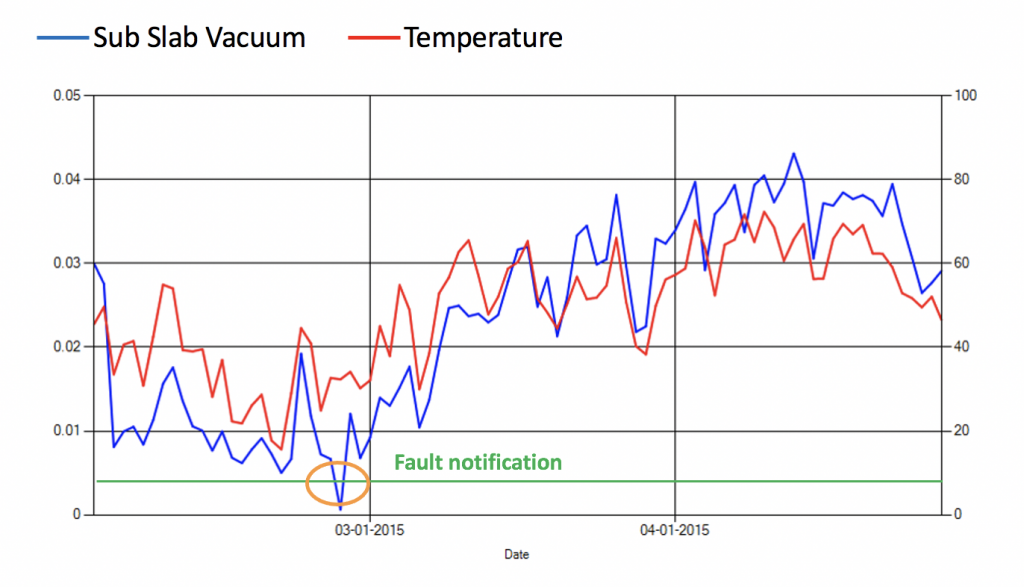Temperature differentials and wind loading from dense cold air, are the leading forces that induce the conveyance of contaminant soil vapors from the ground into homes and buildings. The lower the outdoor temperature, the grater the building stack effect and the greater resultant indoor negative pressure that draws in soil gas.
The function of a Vapor Intrusion Mitigation System (VIMS) is to place a greater level of vacuum on the soil below the slab than the combined environmental and building forces can place on the top of the slab. The problem is that weather-induced forces by themselves can create a seasonal “in order of magnitude pressure differential” between the underlying soil and the interior of the building, even with a VIMS with a constant speed motor running (see graph below). Many VI systems that function well during the summer months do not achieve their design objectives during heating season simply because they do not have the reserve capacity to overcome these forces.

Below 18°F a VI system may require as much as FIVE times the electrical power to create the same pressure differential as on a 70°F day.
That is why regulators insist on heating season measurements to verify the performance of a VIMS. Clean Vapor’s mitigation cisterns employ the Vapor Dynamic’s patented dynamic controls, and Vapor Guardian 5500™ remote management system that integrates embedded sub-slab sensors and control algorithms to respond to the variable forces that induce vapor intrusion.

Weather and building geometry have a lot to say about pressure differentials within a building.
The result is that the regulation-mandated pressure differential is maintained year-round using the LEAST the least amount of electrical power required to achieve the pre-programmed differential, instead of running blowers at top speed, constantly. The Michigan Department of Environmental Quality (MDEQ) has referred to this system as “vapor mitigation systems on cruise control.”

The difference is clear: dynamic controls create a steady, reliable response to extreme conditions.

